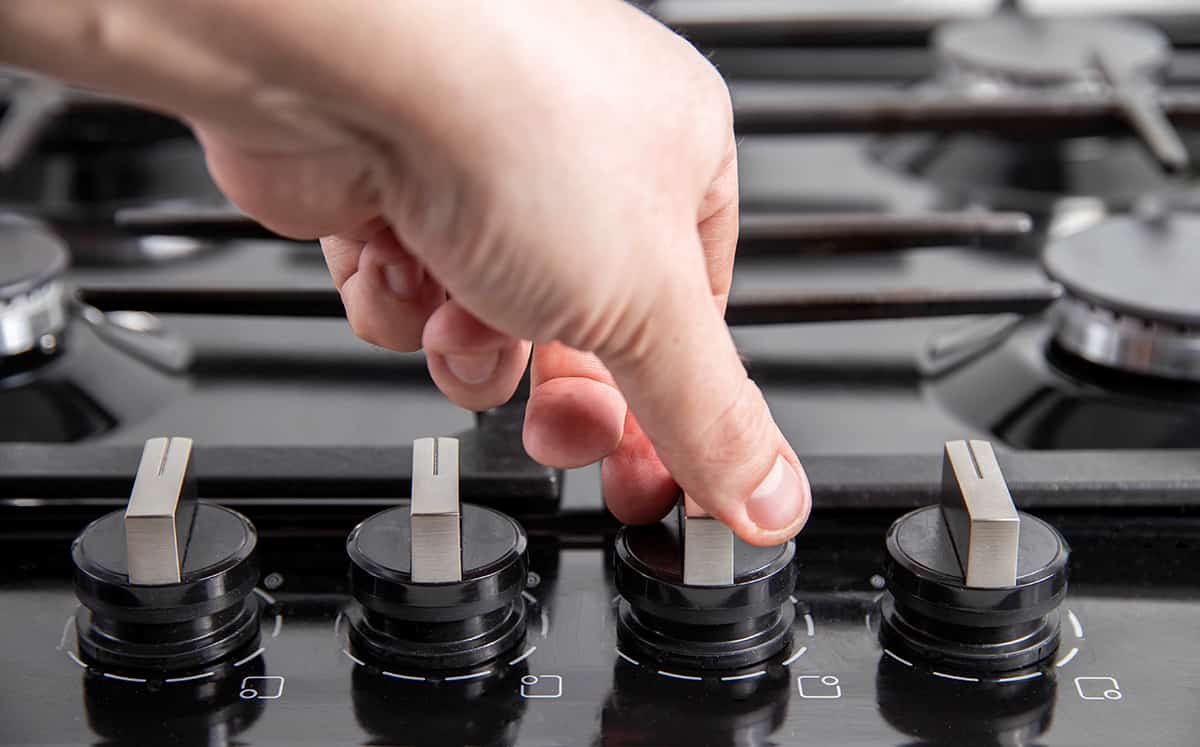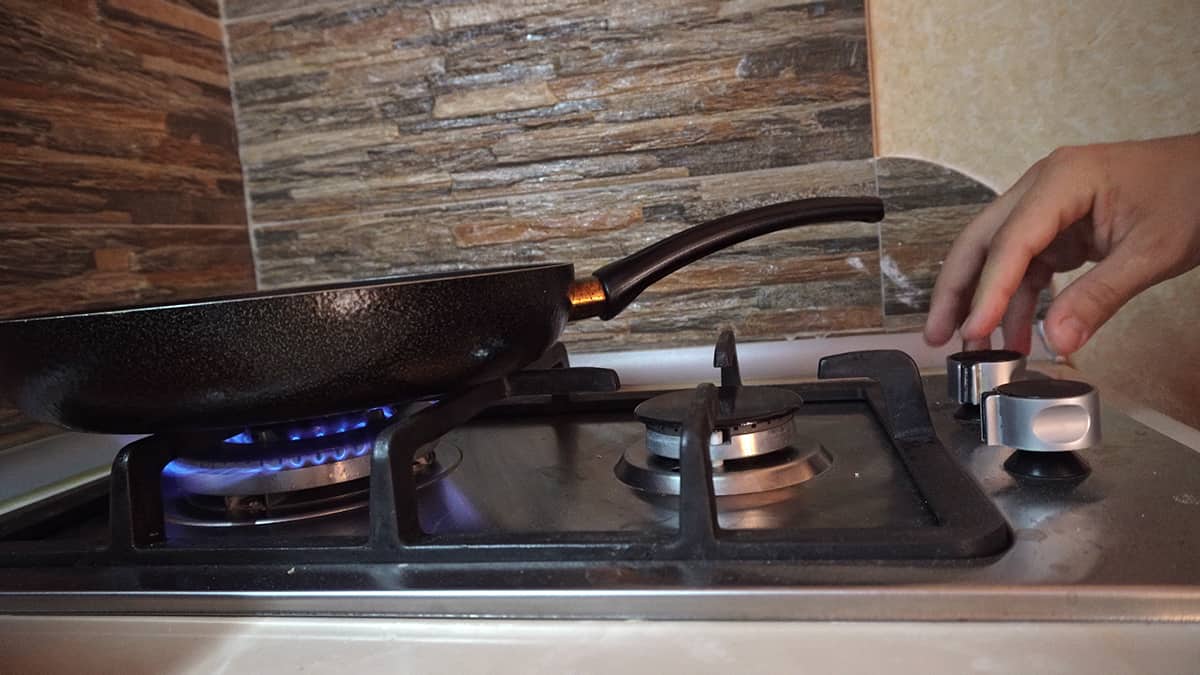Many people accidentally left their stoves on at one point. Perhaps you were in a rush to get to work and forgot that you were boiling water. But what exactly happens when you leave your stove on unattended?
Leaving a stove unattended may result in burned food, damaged cookware, and possibly housefires. Electric and induction stoves come with auto-shutoff features that kill the heat when it has been left on for too long. Some gas stoves will cut the supply of gas only when the burner’s flames are doused.
In this guide, I’ll explain in more detail what happens when you leave a stove on and what sort of safety features stoves have to reduce the risk of fire-related accidents.
What Happens if You Leave the Stove On?
From 2014 to 2018, there were roughly 172,000 housefires per year caused by cooking activities, including but not limited to leaving the stove on. In total, damages exceeded over $1 billion per year, and a total of 550 people died. So, leaving an active stove unattended is a serious, serious matter.
But what other things can happen if you leave your stove on? Well, the very least of your concerns should be that your food is burned to a crisp. The burned food itself becomes a fire hazard, which can amplify the severity of a fire and cause it to spread quickly.
A close second is that your pots and pans will be completely ruined. Immediately after that, your stove might be too burned to salvage, and you’ll have to replace it.
However, there are other possible consequences of leaving your stove unattended. For instance, if you own a gas range, your kitchen and any adjacent rooms might become filled with gas. Any sparks from nearby wall outlets or devices might ignite the gas, and you’ll be left with a huge problem to deal with!
Stove Safety Features
Thanks to advancements in stove safety, you don’t have to worry (as much) about your stove running indefinitely. Many modern stoves come with safety features to ensure that they don’t damage themselves or other things in the event of certain accidents.
Let’s take a look at the various safety features you can commonly find in stoves.
Shutoff valves
Gas stoves are the most dangerous type of stove since they draw gas from a live gas line in your home. If the supply hose on any of your gas-powered appliances becomes damaged in shifts position, your entire home could fill up with gas.
Luckily, you can get a smart automatic shutoff valve for your gas stove. This type of device will automatically stop the flow of gas to your stove when they don’t detect activity. The downside is that they may be triggered by false positives, but it’s better to be safe than sorry.
Electric ignition

Many modern gas stoves do not require a pilot light to turn on. Instead, whenever you turn a knob or dial, it will trigger a spark that will ignite the flow of gas to the stove. This system eliminates the need for a live flame to remain on indefinitely.
Built-in thermostat
Electric and gas stoves may come with a thermostat that continuously gauges how hot the burners get. When the burner or coil reaches a certain temperature, the stove will automatically shut off the supply of gas or electricity. The problem is that this safety feature may not trigger as often in gas stoves.
Timer
Timers are usually found in electric stove models. They can be programmed to cook for several hours. When the timer expires, the stove will stop the flow of electricity to the burner.
Induction
Induction stoves are the latest and greatest things to happen in the kitchen. They cook food by generating a magnetic field that heats up a ferromagnetic pot or pan. Best of all, the ceramic plate on which your pot or pan sits on doesn’t heat up.
What to Do When You Smell Gas

Although your gas stove might have all the safety bells and whistles you could ever hope for, you shouldn’t rely on them completely. There’s a chance that the safety feature might not activate due to one mechanical issue or another.
So, if you can smell gas in your home due to a faulty auto-shutoff switch, what should you do?
Remain calm
Many people’s first response would probably be to freak out and understandably so. However, you should try to keep a cool head during such an emergency since flipping out might cause you to add fuel to the fire, so to speak.
Turn off your stove
Believe it or not, a live flame on your stove is actually a good sign. It means the gas is continually being burned, so it doesn’t have a chance to collect in your kitchen and ignite from an external source. While you’re tending to your stove, make sure to remove all burned cookware from the area. Take them outside and let them come down to room temperature (do not shock them in cold water) before figuring out whether or not they’re still salvageable.
Shut off the gas supply in your home
When you’re calm and collected, you should check the back of your stove and shut off the gas valve. This will prevent more gas from flowing into your home.
Call your utility company
If you do not know how to shut off the gas supply, then leave your home immediately and call your utility company. They should send a technician to resolve the problem for you.
How Long Should You Wait Before Turning the Stove Back on?
It depends on the severity of the problem. If you left your home for weeks at a time with the gas running, you should probably make plans to stay somewhere for the next 24 to 48 hours. However, if it was on for just a couple of hours, you can return to your normal kitchen activities in just a couple of hours.
Propane and natural gas dissipate at different rates, so make sure you know which type of gas your home receives. Natural gas should be gone in about 60 minutes, whereas propane can take twice as long.
Should I Open the Window to Get Rid of Gas?
No, you shouldn’t. When gas mixes with air, it becomes flammable. Opening your windows will introduce more air into your home, increasing the risk of combustion.
Also, you should never turn on any electronics when your home is filled with gas. You might be tempted to turn on a fan to get rid of the gas more quickly, but a spark from the outlet could ignite the gas.
Are Electric Stoves Safer?
Yes, they are, simply due to the fact that electric stoves do not need to be hooked to a gas pipeline to work. Also, electric stoves come with all sorts of safety features that prevent them from running for too long. However, that doesn’t give you an excuse to turn the stove on and forget about it overnight!
When it comes to conventional electric stoves and induction stoves, I’d highly recommend getting an induction stove. This type of stove does not generate heat—instead, it uses a magnetic force to heat up a magnetic pot or pan. So, there’s no risk of burning your hand on the ceramic plate, though you should still be cautious about placing your hand too close to your cookware.
The only downside of electric stoves is that they take longer to cook food compared to gas stoves. That said, if safety is your biggest concern, then you should think about swapping your gas stove for an electric model.






